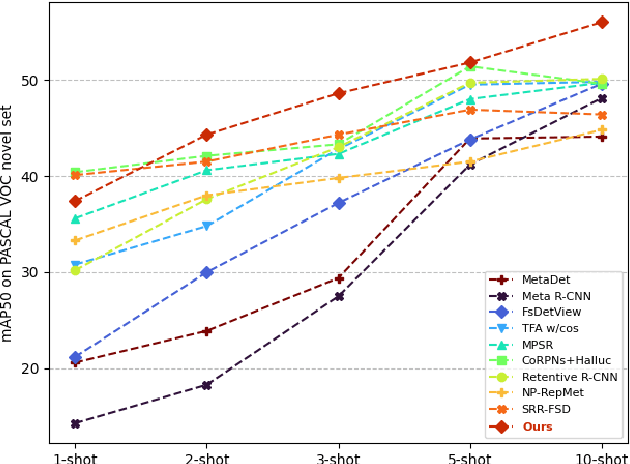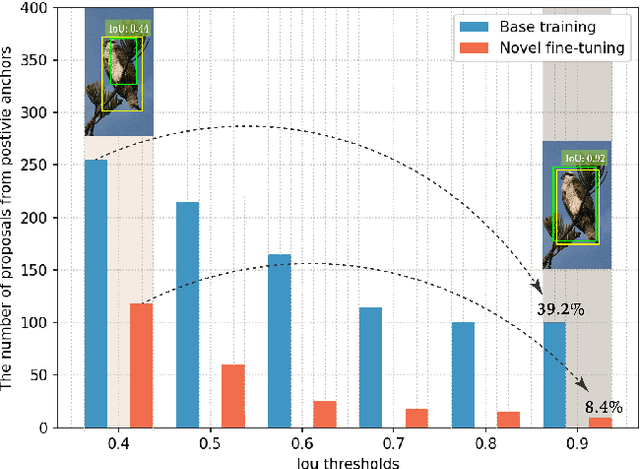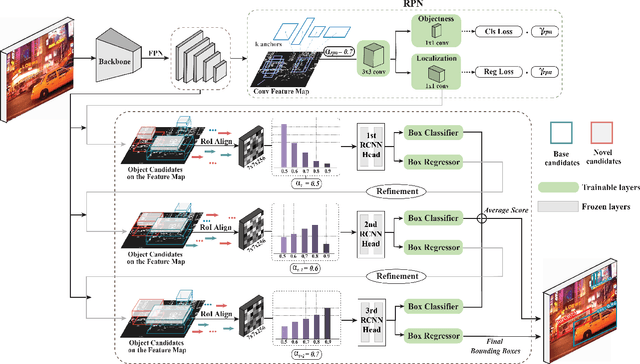Sueyeon Kim
Few-Shot Object Detection with Proposal Balance Refinement
Apr 22, 2022



Abstract:Few-shot object detection has gained significant attention in recent years as it has the potential to greatly reduce the reliance on large amounts of manually annotated bounding boxes. While most existing few-shot object detection literature primarily focuses on bounding box classification by obtaining as discriminative feature embeddings as possible, we emphasize the necessity of handling the lack of intersection-over-union (IoU) variations induced by a biased distribution of novel samples. In this paper, we analyze the IoU imbalance that is caused by the relatively high number of low-quality region proposals, and reveal that it plays a critical role in improving few-shot learning capabilities. The well-known two stage fine-tuning technique causes insufficient quality and quantity of the novel positive samples, which hinders the effective object detection of unseen novel classes. To alleviate this issue, we present a few-shot object detection model with proposal balance refinement, a simple yet effective approach in learning object proposals using an auxiliary sequential bounding box refinement process. This process enables the detector to be optimized on the various IoU scores through additional novel class samples. To fully exploit our sequential stage architecture, we revise the fine-tuning strategy and expose the Region Proposal Network to the novel classes in order to provide increased learning opportunities for the region-of-interest (RoI) classifiers and regressors. Our extensive assessments on PASCAL VOC and COCO demonstrate that our framework substantially outperforms other existing few-shot object detection approaches.
 Add to Chrome
Add to Chrome Add to Firefox
Add to Firefox Add to Edge
Add to Edge